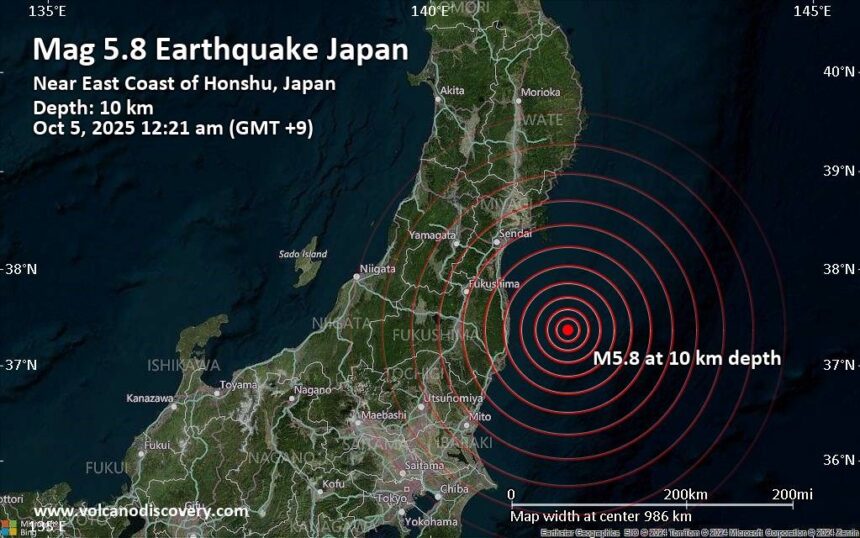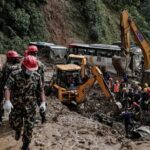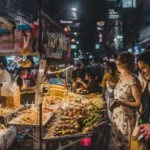TOKYO – A magnitude 5.8 earthquake struck the east coast of Honshu, Japan, early Sunday morning, rattling nerves across one of Japan’s most densely populated regions and causing widespread but contained damage, officials reported.
The quake, centred off the coast near the city of Sendai in Miyagi Prefecture, injured at least 45 people and inflicted millions in structural harm, though no fatalities were confirmed as of midday.
The Japan Meteorological Agency (JMA) recorded the tremor at 4:17 a.m. local time, with its epicentre approximately 20 kilometres (12 miles) beneath the Pacific seabed, about 50 kilometres east of Sendai.
The shaking lasted around 30 seconds but was strong enough to trigger tsunami advisories along a 200-kilometre stretch of coastline, which were lifted within an hour after waves measured less than half a meter (1.6 feet) in height.
Eyewitnesses described a scene of chaos in the pre-dawn darkness. “It felt like the ground was heaving under my feet,” said Hiroki Sato, a 34-year-old fisherman from Ishinomaki, a port city 40 kilometres north of the epicentre. “I was thrown from my bed, and by the time I got outside, sirens were blaring everywhere. The old warehouse by the docks cracked right down the middle.”
Memories of the 2011 Tohoku Disaster
Initial assessments from the Miyagi Prefectural Government paint a picture of moderate devastation in a region still scarred by the memory of the 2011 Tohoku disaster, which claimed over 15,000 lives. At least 12 homes in coastal communities collapsed partially, while 28 others sustained serious cracks, forcing the evacuation of around 300 residents to temporary shelters.
Power outages affected up to 15,000 households in Sendai and surrounding areas, and several major roads, including sections of National Route 45, were closed due to fallen debris and minor landslides.
Injuries, mostly minor, included sprains, cuts from shattered glass, and one case of a broken arm reported at Sendai’s Tohoku University Hospital. “We’ve treated 22 patients so far, nothing life-threatening,” said Dr. Yumi Nakamura, the hospital’s emergency director.
“But we’re bracing for more as people assess their homes in daylight.” Three individuals remain under observation for possible concussions sustained during the initial jolt.
Infrastructure took a harder hit in industrial zones. A chemical plant in Tagajo reported a small leak from ruptured piping, prompting a temporary shutdown and environmental monitoring by local authorities. High-speed Shinkansen bullet train services between Tokyo and Sendai were suspended for four hours, stranding thousands of weekend travellers.
Estimated damages are already climbing toward 5 billion yen (about $33 million USD), with fisheries suffering the most acute losses—dozens of boats broke free from moorings and washed ashore, tangling in rocky inlets.
Japan’s PM Addresses the Nation
Prime Minister Fumio Kishida addressed the nation from his Tokyo residence shortly after 6 a.m., urging calm while mobilizing the Self-Defence Forces for rapid response. “Japan is built to withstand these forces of nature, but we must remain vigilant,” Kishida said in a televised statement.
“Aid is flowing to those affected, and our experts are monitoring for aftershocks.” The JMA has issued warnings of potential seismic activity in the coming days, as the region sits atop the volatile subduction zone where the Pacific Plate grinds beneath the Eurasian Plate.
Seismologists were quick to contextualize the event. “This quake is a stark reminder of Honshu’s vulnerability,” noted Dr. Kenji Satake, a leading earthquake researcher at the University of Tokyo. “While not as devastating as 2011’s magnitude 9.0, its shallow depth amplified the shaking near the coast. We’ve seen foreshocks in this area recently—residents should prepare emergency kits and know their evacuation routes.”
Community spirit shone through the rubble. In Kesennuma, a fishing town hit hard in 2011, volunteers organized impromptu supply drives by 7 a.m., distributing water, blankets, and hot meals from mobile kitchens. “We’ve been here before,” said local elder Mika Yamamoto, 62, as she handed out rice balls to dazed families. “But each time, we rebuild stronger.”
As cleanup crews fan out and engineers inspect bridges and seawalls, the focus shifts to recovery. Schools and businesses in Miyagi Prefecture are closed for the day, with remote learning and work-from-home advisories in place.
International aid offers have poured in from neighbours like South Korea and the United States, though Japanese officials insist the situation is under control. For now, the east coast breathes a collective sigh of relief, but the ground beneath Honshu remains restless—a perpetual dance with the earth’s fury that no one takes lightly.
Related News:
Forza Horizon 6 Japan Setting Sparks Intrigue at Tokyo Game Show














